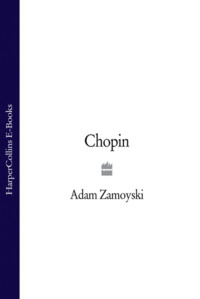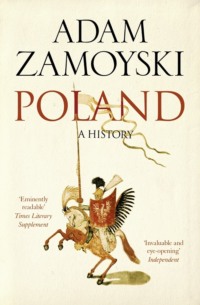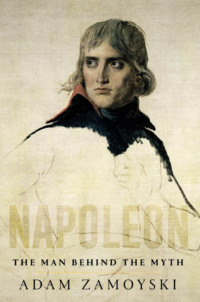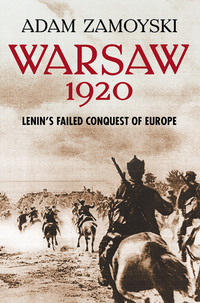
Полная версия
1812: Napoleon’s Fatal March on Moscow

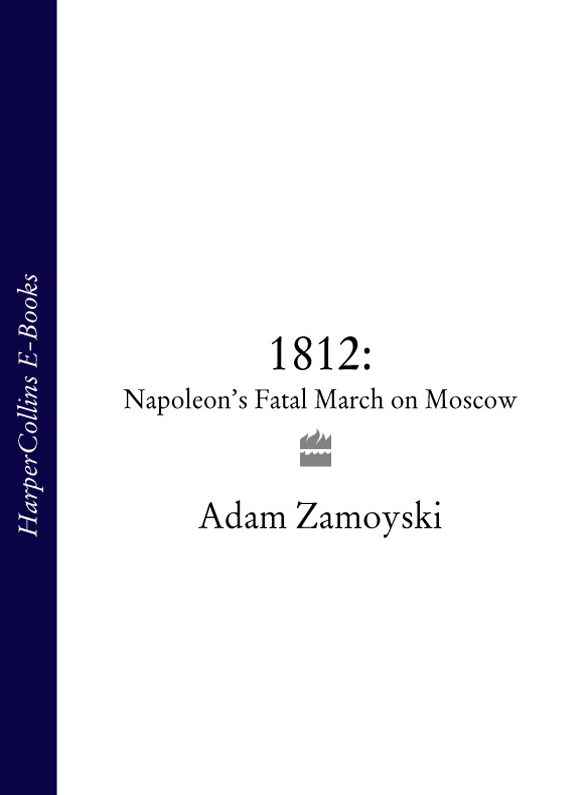
1812
Napoleon’s Fatal March on Moscow
ADAM ZAMOYSKI

Maps
Europe in 1811
Russia’s expansion in the west, 1772–1812
The Russian Armies of the West
French and Russian dispositions in June 1812
The French advance
The advance to Vitebsk
The Rudnia offensive and Napoleon’s Smolensk manoeuvre
The battle for Smolensk
Lubino – Valutina Gora
The Russian positions at Borodino
Borodino. The morning attacks
Borodino. The final assault
Kutuzov’s retreat from Moscow
Maloyaroslavets
The retreat
The view from Smolensk
Krasny, 15–16 November
Krasny, 16 November
Krasny, 17–19 November
The closing trap, 21 November
The Berezina manoeuvre
The Berezina crossing
The strategic situation at the beginning of December
Statistical chart showing the outward march and retreat of all the forces which crossed the Niemen
Contents
Cover
Title Page
Maps
Select Glossary of Place-Names in the Former Polish Lands of the Russian Empire
Introductory Note
1 Caesar
2 Alexander
3 The Soul of Europe
4 The Drift to War
5 La Grande Armée
6 Confrontation
7 The Rubicon
8 Vilna
9 Courteous War
10 The Heart of Russia
11 Total War
12 Kutuzov
13 The Battle for Moscow
14 Hollow Triumph
15 Stalemate
16 The Distractions of Moscow
17 The March to Nowhere
18 Retreat
19 The Mirage of Smolensk
20 The End of the Army of Moscow
21 The Berezina
22 Empire of Death
23 The End of the Road
24 His Majesty’s Health
25 The Legend
Plates
Notes
Sources
Index
About the Author
Reviews
Praise
By the Same Author
Copyright
About the Publisher
Select Glossary of Place-Names in the Former Polish Lands of the Russian Empire
Babinovitse: Babinowicze (Polish), present-day Babinavicy (Belarus)
Berezina: Berezyna (Polish), present-day Bjarezina (Belarus)
Beshenkoviche: Bieszenkowicze (Polish), present-day
Bešankovicy (Belarus)
Bobr: Bóbr (Polish), present-day Bobr (Belarus)
Borisov: Borysów (Polish), present-day Barysau (Belarus)
Brest: Brzesc (Polish), present-day Brést (Belarus)
Dnieper: Dniepr (Polish), present-day Dnjapro (Belarus)
Drissa: Dryssa (Polish), present-day Verhnjadzvinsk (Belarus)
Dubrovna: Dubrowna (Polish), present-day Dubrovno (Belarus)
Dunaburg: Dzwinsk (Polish), present-day Daugavpils (Latvia)
Glubokoie: Głebokie (Polish), present-day Glybokae (Belarus)
Grodno: Grodno (Polish), Grodna (Belarus)
Kobryn: Kobryn (Polish), present-day Kobryn (Belarus)
Kovno: Kowno (Polish), present-day Kaunas (Lithuania)
Ladi: Lady (Polish), present-day Liadi (Belarus)
Loshnitsa: Łosznica (Polish), present-day Lošnica (Belarus)
Miedniki: Miedniki (Polish), present-day Medininkai (Lithuania)
Minsk: Minsk (Polish), present-day Minsk (Belarus)
Mogilev: Mohylów (Polish), present-day Magilev (Belarus)
Molodechno: Mołodeczno (Polish), present-day Maladzecna (Belarus)
Mstislav: Mscislaw (Polish), present-day Mscislav (Belarus)
Niemen (river): Niemen (Polish), present-day Nemunas (Lithuania)
Nieshviezh: Nieswiez (Polish), present-day Njasviž (Belarus)
Orsha: Orsza (Polish), present-day Orša (Belarus)
Oshmiana: Oszmiana (Polish), present-day Ašmjany (Belarus)
Ostrovno: Ostrowno (Polish), present-day Astrovna (Belarus)
Pleshchenitse: Pleszczenice (Polish), present-day Plescanicy (Belarus)
Polotsk: Polock (Polish), present-day Polack (Belarus)
Ponary: Ponary (Polish), Panarai (Lithuania)
Shvienchiany: Swieciany (Polish), present-day Svencionys (Lithuania)
Smorgonie: Smorgonie (Polish), present-day Smarhon’ (Belarus)
Studzienka: Studzienka (Polish), present-day Studenka (Belarus)
Tolochin: Toloczyn (Polish), present-day Talacyn (Belarus)
Troki: Troki (Polish), Trakai (Lithuania)
Vesselovo: Weselowo (Polish), Veselovo (Belarus)
Vilia: Wilja (Polish), present-day Neris (Lithuania)
Vilna: Wilno (Polish), present-day Vilnius (Lithuania)
Vitebsk: Witebsk (Polish), present-day Vicebsk (Belarus)
Volkovisk: Wołkowyski (Polish), present-day Vavkavysk (Belarus)
Zakrent: Zakret (Polish)
Ziembin: Ziembin (Polish), present-day Zembin (Belarus)
Introductory Note
Napoleon’s invasion of Russia in 1812 was one of the most dramatic episodes in European history, an event of epic proportions, etched deeply in the popular imagination. I only had to mention the subject of this book for people to come to life, stirred by recollections of Tolstoy’s War and Peace, by the scale of the tragedy, by some anecdote that had lodged itself in their memory, or just a mental image of snowbound Napoleonic tragedy. But the flash of recognition was almost invariably followed by an admission of total ignorance of what had actually happened and why. The reasons for this curious discrepancy are fascinating in themselves.
No other campaign in history has been subjected to such overtly political uses. From the very beginning, studies of the subject have been driven by a compulsion to interpret and justify that admits of no objectivity, while their sheer volume – over five thousand books and twice as many articles published in Russia alone in the hundred years after 1812 – has helped only to cloud the issue.1
This was to be expected, considering what was involved. There were great reputations at stake: those of Napoleon, of Tsar Alexander, of Field Marshal Kutuzov, to name only the obvious ones. There was also a need to make sense of the whole business, for this war, unprecedented in the history of Europe in both scale and horror, was not easy to assess in military terms. The action was often confused. Both sides claimed victory in every engagement. And if the French had lost the campaign, the Russians could hardly be said to have won it. At the same time, people on both sides had behaved with a savagery that neither nation wished to contemplate.
In France, early attempts at a balanced study were complicated by political factors: the regime which replaced Napoleon’s soon after the events required anything to do with him to be represented in the most negative terms. Censorship also played a part in Russian assessments, for more complex reasons. The events of 1812 and their aftermath raised questions about the very nature of the Russian state and its people, and, as the historian Orlando Figes nicely puts it, ‘the nine-teenth-century quest for Russian nationhood began in the ranks of 1812’.2
This quest was innately subversive of the Tsarist system, and led in the first place to the Decembrist Rising of 1825. It was pursued, along divergent paths, by those who sought a more modern Russia integrated into the mainstream of Western civilisation, and by the slavophiles, who rejected the West and all it stood for, seeking instead a truly ‘Russian’ way. The events of 1812 were used by both sides to back up their arguments, rapidly attaining mythological status and becoming increasingly distorted as a result. This dualism was only complicated with the advent of Marxism.
The first French historians to write about 1812 were either hostile to Napoleon or motivated by a desire to ingratiate themselves with the post-Napoleonic regime, and therefore laid all blame at the feet of the demon Bonaparte. But most French writers on the events of the campaign, whether they were participants or later academic historians, have followed a more measured, and broadly similar, path. While often displaying a degree of embarrassment over such an apparently imperialist venture and the misery France inflicted on the Russian people, not to mention her own and her allies’ soldiers, they have tried to redeem Napoleon’s reputation and the honour of French arms by a generous representation of the doughtiness of the Russian soldier and of the implacable nature of the Russian climate. They have also clutched at the straw of comfort held out by the Romantic imagination of the 1820s and 1830s, which turned the picture of sordid disaster into a vision of greatness in adversity.
In the last decades of the nineteenth century, distance as well as a growing cordiality between the two nations made it possible for French historians to approach the subject more objectively. The centenary, coming as it did just before the Great War and at a time when the two nations were allies, saw cooperation between the historical commissions of the French and Russian staffs, and led to the publication of much primary source-material. But French historians continue to show a certain reluctance to deal with the war, and have come up with no satisfactory general study of it.
The first Russian account of the events, by a colonel on the general staff, was produced with such alacrity that it was published, in English, as far afield as Boston within a year. It was undoubtedly a piece of propaganda, intended to pave the way for Russia’s future role in the affairs of Europe, but it did reflect the perceptions of large sections of Russian society. It depicted Alexander as the catalyst who rallied a gallant patriotic nobility and a loyal peasantry eager to defend Faith, Tsar and Fatherland.
Dmitri Petrovich Buturlin, himself a participant, who wrote the first detailed account of the war, added a couple of new elements. One was the idea of Russia as the innocent victim of aggression. The other was the image of Kutuzov as the quintessential Russian hero, simple but wise. A.I. Mikhailovsky-Danilevsky, whose four-volume history came out in 1839, depicted Alexander as a moral beacon awakening the spiritual as well as the physical forces of the Russian people in defence of their fatherland. It was he who first called it the ‘Otechestvennaia Voina’, the ‘Patriotic War’. Underlying much of their writing was the view that it was the Almighty, acting through the Tsar and the Russian people, who had confounded the evil one. This being so, French assertions that they had been defeated by the Russian winter rather than the Russians themselves were dismissed as irrelevant.
It was against the backdrop of this fundamentally spiritual interpretation that in the summer of 1863 Tolstoy began work on his novel War and Peace, in which he was to add his own highly personal gloss on the events.
Tolstoy had originally been enthusiastic about the programme of liberal reforms launched by Tsar Alexander II when he came to the throne in 1855. He had even tried to pre-empt them by offering the serfs on his estate a deal that would free them from their obligations and give them the land they worked. But the serfs were suspicious and rejected his offer. Instead of turning Tolstoy against the peasants, this helped to put him off liberalism in general. He embraced the slavophile view that the liberals would destroy Russia by imposing foreign ideas and institutions alien to the Russian character. He also reacted against the wave of self-abasement among intellectuals who had turned the recent defeat in the Crimean War into a paradigm for Russian backwardness. In his depiction of the events of 1812, Tolstoy traces a metaphor of the penetration of Russia by foreign influences: Napoleon is the harbinger of an ‘alien’ order, which some of Alexander’s ‘contaminated’ entourage favour. But it is rejected by the Russian nation. Yet this is no glorification of the Russian common people – the hero of Tolstoy’s novel is a deferential peasantry led by the minor nobility who, unlike the Frenchified aristocrats, have remained true to Russian values. But Tolstoy’s work is not all fantasy, and he did his homework.
The first sentence of War and Peace expresses outrage at French doings in Genoa and Lucca in 1799, while on the next page one of the protagonists affirms that Russia will be ‘the saviour of Europe’. With this opening, Tolstoy firmly dismissed the notion of the French invasion of 1812 as an act of gratuitous aggression: to him it was clear that it was merely part of a prolonged struggle between France and Russia for hegemony over Europe. Yet it was to be some time before a Russian historian would mention this.
The second half of the nineteenth century saw the publication of a great many diaries, recollections and letters of participants in the events; of staff documents giving troop numbers and dispositions; and of official documents, orders and letters. It also brought forth a number of very useful studies of specific aspects of the campaign, of individual battles, and of social reactions to the events.
The next generation of Russian historians to deal with the subject in any depth were influenced by the works of Marx and Engels and took a more pragmatic view. It is true that Aleksandr Nikolaevich Popov, writing in 1912, idealised Kutuzov and ‘Russian society’, but his more down-to-earth contemporary Vladimir Ivanovich Kharkievich admitted that Kutuzov had faults, and rejected the image of Russia as innocent victim. Konstantin Adamovich Voensky took a similar line, and related Russian military failures in 1812 to the shortcomings of the country’s constitution and social structure. A number of other historians produced studies of specific aspects, in which they turned up evidence of a less glorious response by Russian society than had been represented hitherto, and confirmed that logistics and climate had been largely responsible for the outcome.
Perhaps the most forceful of this generation of historians, and the one who reacted most vigorously against the old pieties, was Mikhail Nikolaevich Pokrovsky. According to him, the Tsarist state was bent on extending Russian hegemony beyond its borders in order to guarantee the survival of an essentially feudal system at home. He went so far as to say that Napoleon’s invasion of Russia was ‘an act of necessary self-defence’ on his part. He was deeply critical of Kutuzov and other Russian generals. He stressed the role of the weather in the defeat of the French, and belittled the role of ‘Russian society’, questioning the myth of the patriotic peasants. Those who did resist the invader did so, according to him, in defence of their chickens and geese, not their fatherland.3
This view was endorsed by Lenin, and held sway during the first two decades of Soviet rule. The war was not referred to as the ‘Patriotic War’ during this period, as it concerned only the respective economic interests of the Russian imperialists and the French bourgeoisie. The Russian army had made a mess of defending the country precisely because it was commanded by nobles, and the government’s fear of arming the peasants prevented the development of a guerrilla war against the French.
At Stalin’s prompting, a ruling of the Central Committee on 16 May 1934 recommended a fresh approach to the study of history, aimed at engaging the masses. How that would affect the representation of the events of 1812 was not immediately clear. Writing in 1936, the historian Evgenii Viktorovich Tarle affirmed that the Russian people had played no part in the war, dismissing evidence of peasant guerrilla activity as no more than the opportunistic murder of French stragglers. The following year he published an account of the war in which he said almost exactly the opposite, representing it as the triumph of the patriotic Russian people. After a certain amount of hair-splitting argument couched in the language of Marxist dialectics, it was once again dubbed the ‘Patriotic War’, but only in inverted commas. Tarle also admitted that the weather might have had something to do with the French débâcle, but was later accused of retailing the ideas of what one writer termed ‘the Trotskyite-Bukharinite counter-revolutionary enemies of the people’ and ‘the lying inventions of foreign authors’ – even the account by the great military theorist Karl von Clausewitz, himself a participant in the campaign on the Russian side, was dismissed as ‘lies’.
Tarle adopted a traditional spiritual view of the events, representing the French victory at Borodino as ‘a moral victory’ for the Russians and the war itself as the crucible of all that was best in Russian history over the next decades. He also built up the image of Kutuzov, as a kind of metaphysical emanation of the Russian people, their true leader in every sense.4 But it was his colleague P.A. Zhilin who made the obvious connection between Kutuzov and Stalin as saviours of the fatherland.
Hitler’s invasion of Russia in 1941 and the titanic struggle that followed added substance to this connection, and the events of 1812 provided a wonderful source of propaganda material. The ‘Patriotic War of 1812’, as it would henceforth be known, could be viewed as a dress rehearsal for what became the ‘Great Patriotic War’. Tarle’s book was translated and published widely in the West, in order to help make the point that a peace-loving Russia had been attacked for no reason at all – deftly burying the embarrassing fact that, just as in 1812, Russia had been a complicitous ally of the other side up to the very outbreak of hostilities – but that her people and the great leaders that sprung from their bosom were invincible.
For a brief period following Stalin’s death in 1953 an element of objectivity entered Russian historiography, and a number of solid studies on the economic, political and diplomatic background, the military preparations and other aspects saw the light of day. But the advent of Brezhnev put the lid on this. Historians such as L.G. Beskrovny plugged the old patriotic nostrums and shamelessly repeated obvious falsehoods. French numbers were regularly inflated and those of the Russian forces scaled down. The persona of Kutuzov took on a life of its own. The luxury-loving prince was transformed into a kind of peasant leader who was in some mysterious way ‘in conflict’ with the Tsar and the system. Every blunder he made was represented as a piece of cunning, the actual effect of which was not defined, and every failure to act as a brilliant strategic ploy.
This kind of interpretation went unchallenged until the late 1980s, when a new generation of historians, such as A.A. Abalikhin, V.G. Sirotkin, S.V. Shvedov, Oleg Sokolov and N.A. Troitsky brought a freshness and honesty to the subject never known before. But it will probably be some time before a satisfying synthesis emerges from this.
The handful of Western historians who have written on the subject have made modest use of available Russian primary sources, relying instead on the works of their Russian colleagues. Not surprisingly, they have accepted the facts and figures they found in these. More surprisingly, most have also accepted some of the interpretations and ingested, albeit unconsciously, a dose of their emotional and political flavour.
Virtually all the extant documentary material concerning the political and military events covered by this book has been published and available for decades. It would be interesting, and possibly worthwhile, to investigate further areas such as the question of how the episode impacted on the structures of the Russian state, its economy and attitudes to authority. It might also be profitable to go back to the manuscript originals of some of the printed sources, particularly where these have been translated from French into Russian. But it is highly improbable that new documents of any significance will come to light, or that further detailed research in any ancillary field will throw up fresh evidence on the causes of the war, its conduct, the numbers involved, the extent of the losses or any of the other vital aspects.
The ground has therefore been thoroughly prepared, and now that the nationalist passions and the political imperatives have ebbed away, the task of writing about the events of 1812 should present a less daunting prospect. But it remains a formidable one. For this was not just any war. It was the climax in a protracted struggle between Napoleon and Alexander, between France and Russia, and between the ideological inheritance of the European Enlightenment and the French Revolution on the one hand, and a reactionary combination of Christianity, monarchism and traditionalism on the other. It involved the whole of Europe, and its repercussions were therefore widespread as well as long-lasting. Its scale was unprecedented, and raised a number of issues hitherto unknown in military history. It was also the first modern war, in that the entire Russian people were forced by their own government to participate actively, and popular feeling became an element of military strategy. It is impossible to isolate any of these elements from the others, as the conflict does not make sense without at least an awareness of the depth and breadth of the issues involved.
To do justice to such a subject would take many years, and a book at least twice the length of this one, which is not intended to be in any way a definitive work. It is not a full record of the military operations, which involved dozens of engagements and ranged over a vast area. Nor does it aspire to be any more than an outline of the diplomatic relationship between France and Russia. My principal aim in writing this book has been to tell an extraordinary story, of which everyone has heard but very few have any real knowledge. I have attempted to place it in its wider context and to touch on its deeper significance. Above all, I have tried to convey what these events meant for those concerned, at every level – for this is par excellence a human story, of hubris and nemesis, of triumph and catastrophe, of glory and squalor, of joy and suffering.
I have therefore drawn heavily on the first-hand accounts of participants, of which there are a remarkable number. There is much variation between them, in terms of both accuracy and literary quality: some are original letters or diaries; others are memoirs written from diaries; memoirs written from memory, some of them composed within a year or two, others decades later; accounts based on personal experience and documentation; and regular histories written by participants, some of whom were in key positions, others only witnesses. I have taken these factors into account in making use of them, and I have avoided basing myself too heavily on, for instance, the much-quoted Ségur, who was not a central figure but who wrote as though he had been, and subjected his writing to exalted literary pretensions; I also avoid his main critic, Gourgaud, who was himself not as well placed to know what was going on as he suggests, and who subjects his account to uncritical worship of Napoleon.
I have been driven by the same desire to reproduce the human experience in my choice of illustrations, and in this I have been aided by another unique aspect of this war. This was the only campaign before the age of photography to have been graphically recorded by a number of participants, some of whom were distinguished artists. Not until the American Civil War, half a century later, would the realities of war be conveyed through such vivid insights. In view of this, I decided to dispense with the array of pompous and largely meaningless battle scenes that usually adorn this kind of book, and to concentrate on providing something more akin to a photographic record of life on campaign. Apart from the small number of portraits of the main protagonists, almost every image was drawn or painted by a participant, either on the spot or from memory, and the few exceptions to this were executed under the direction of participants.




